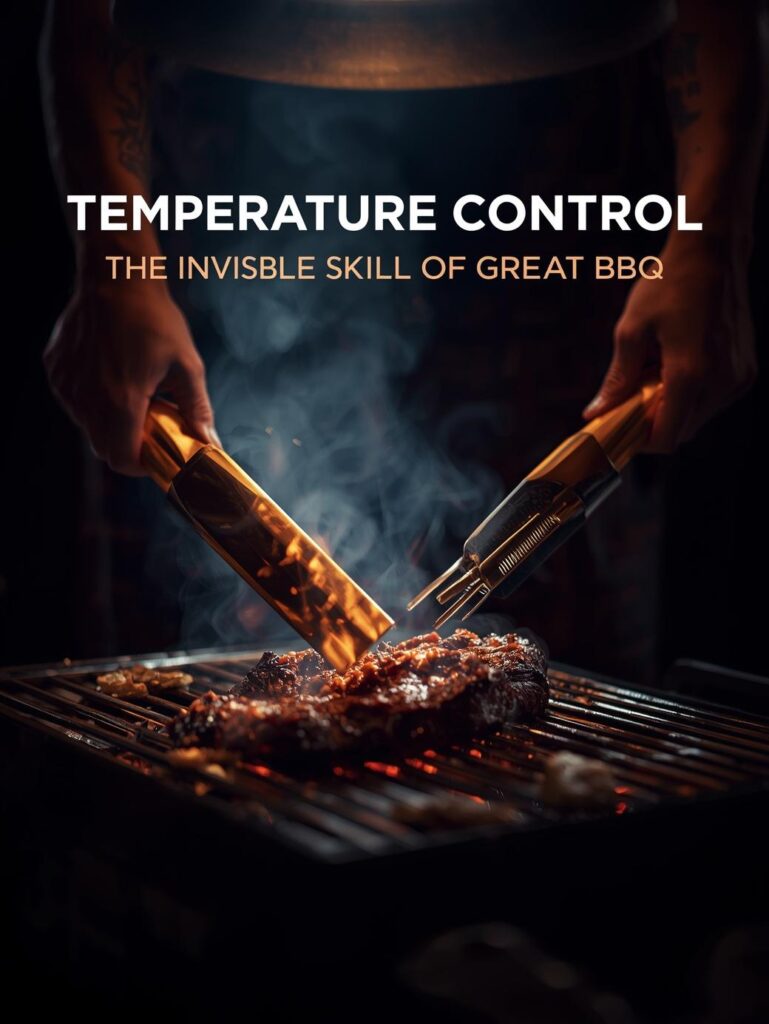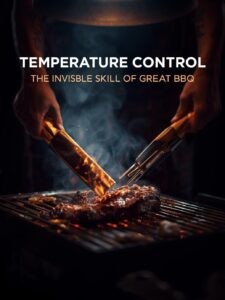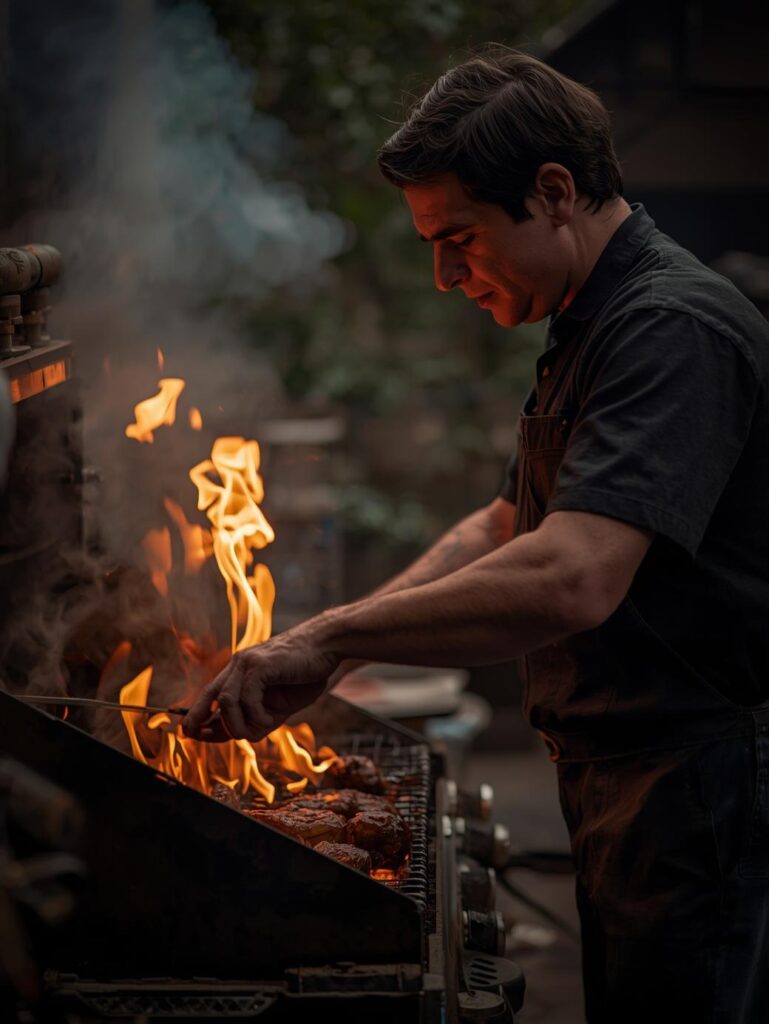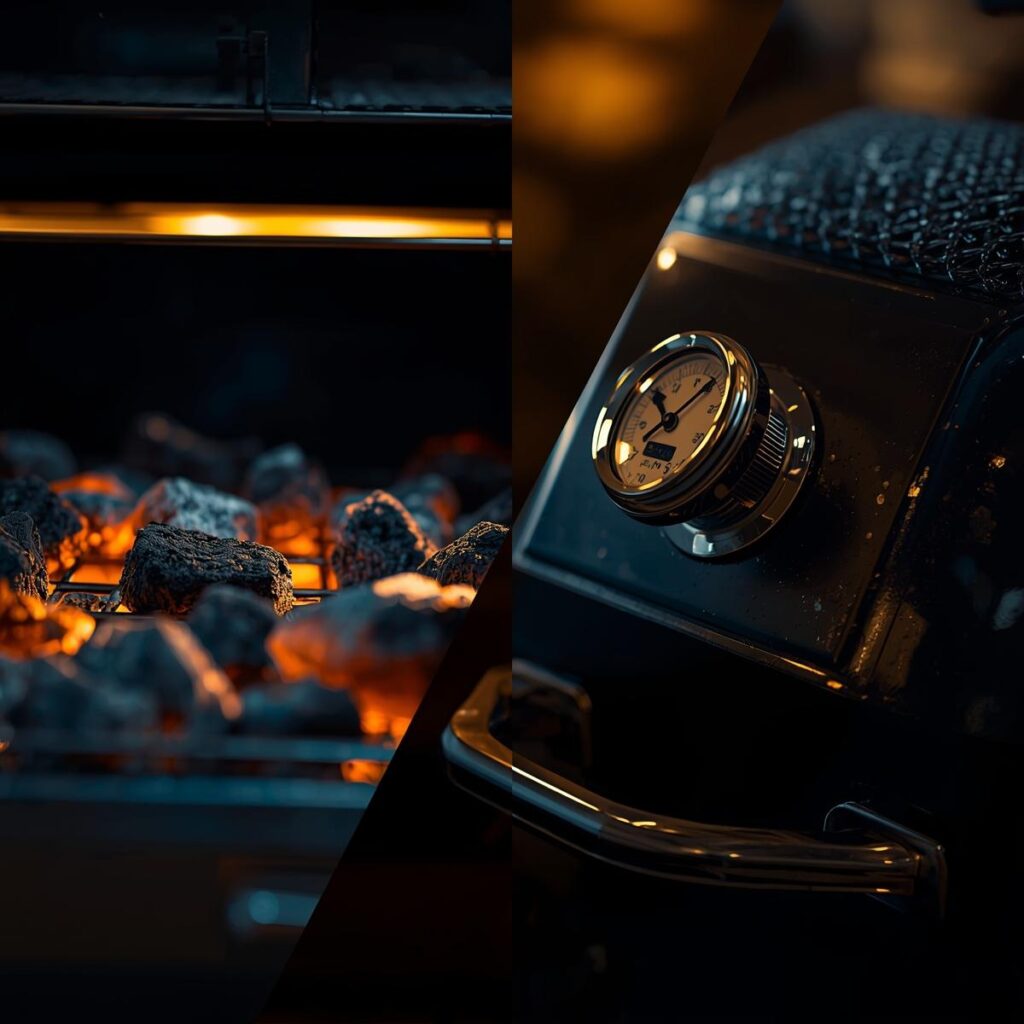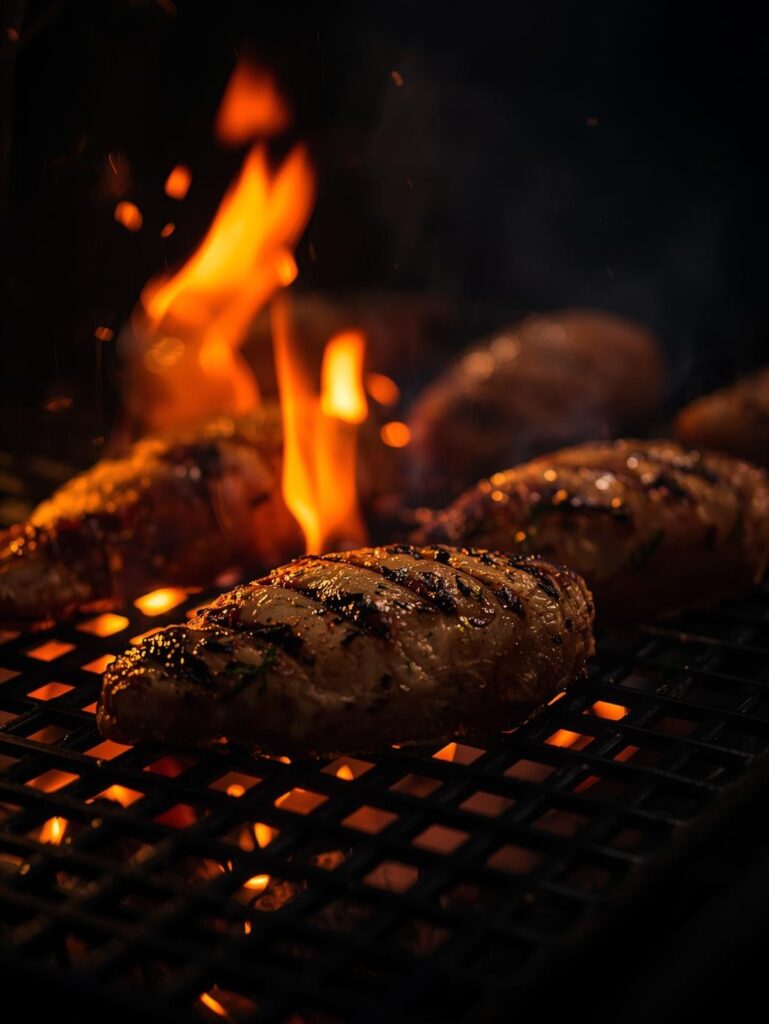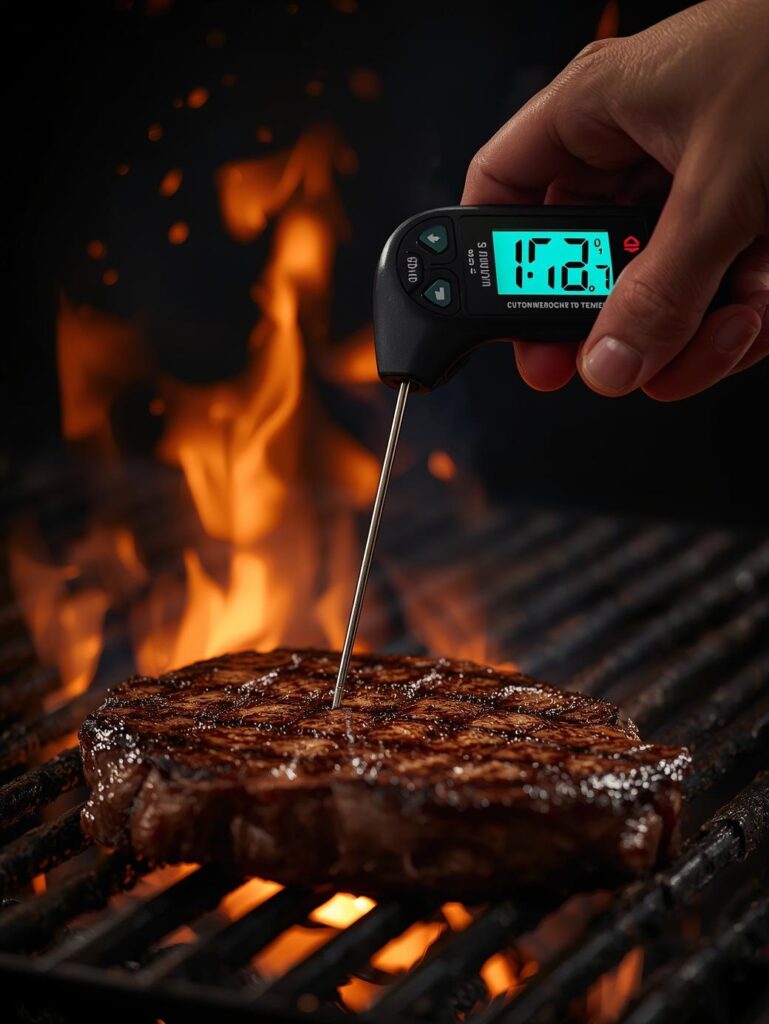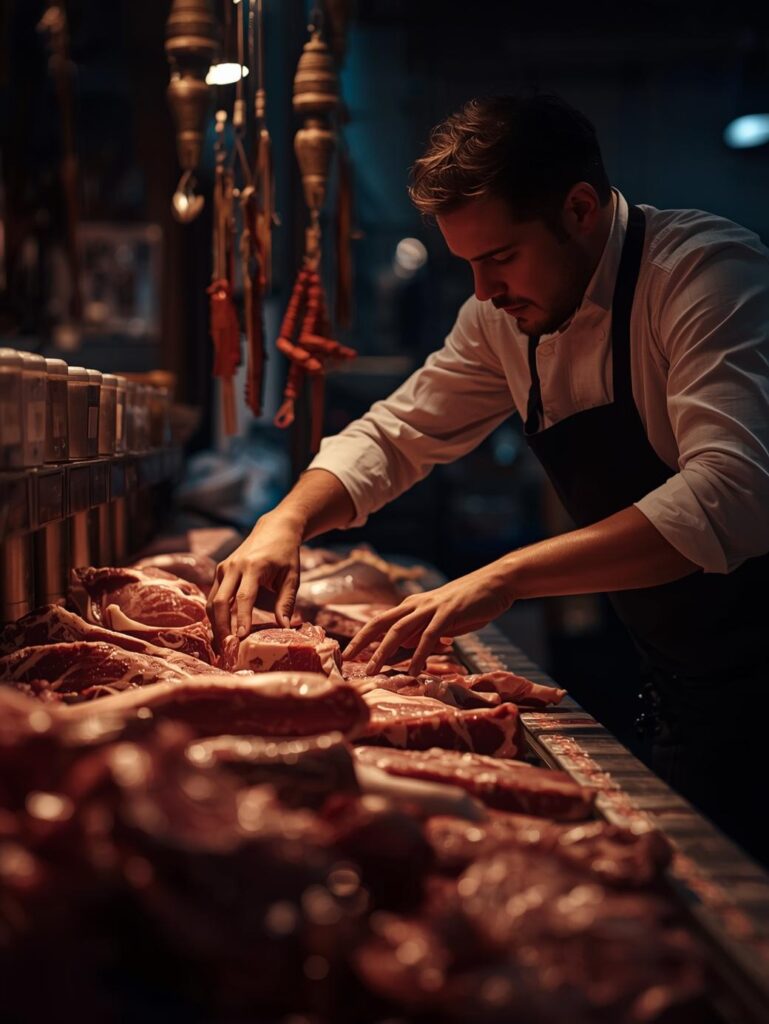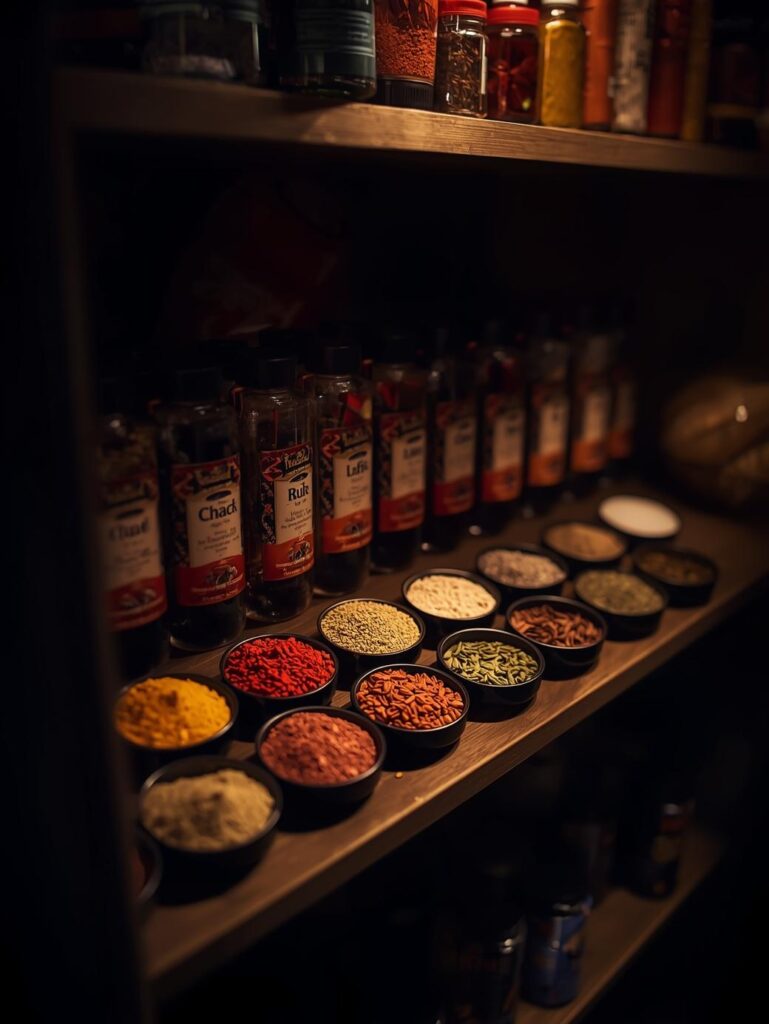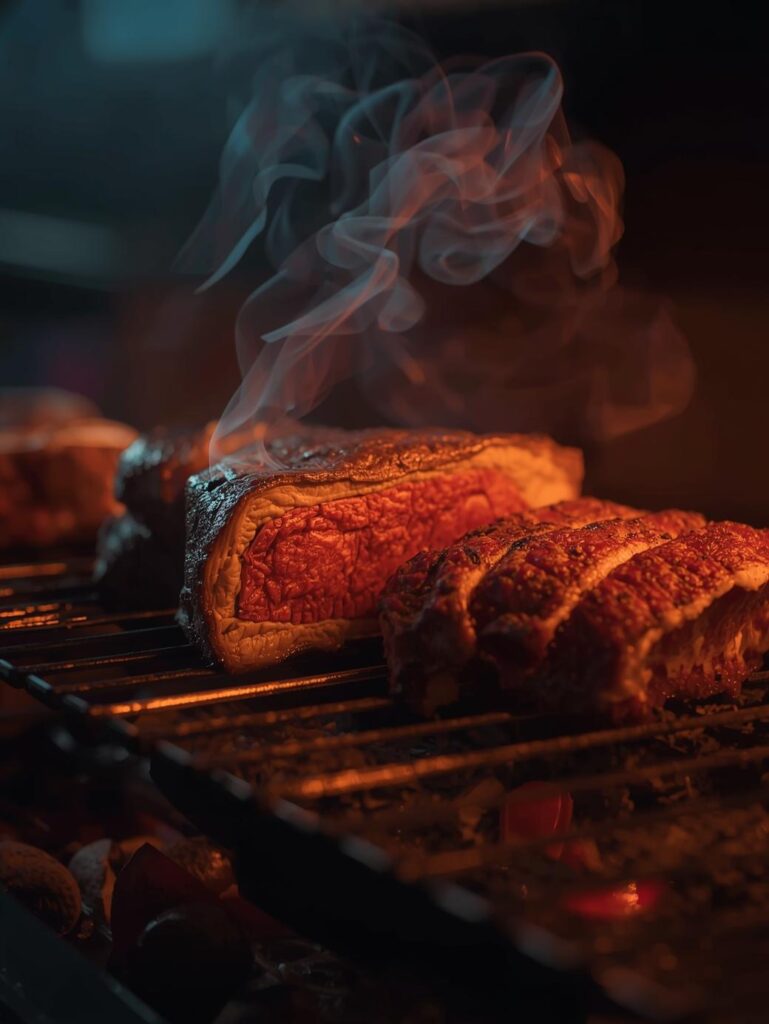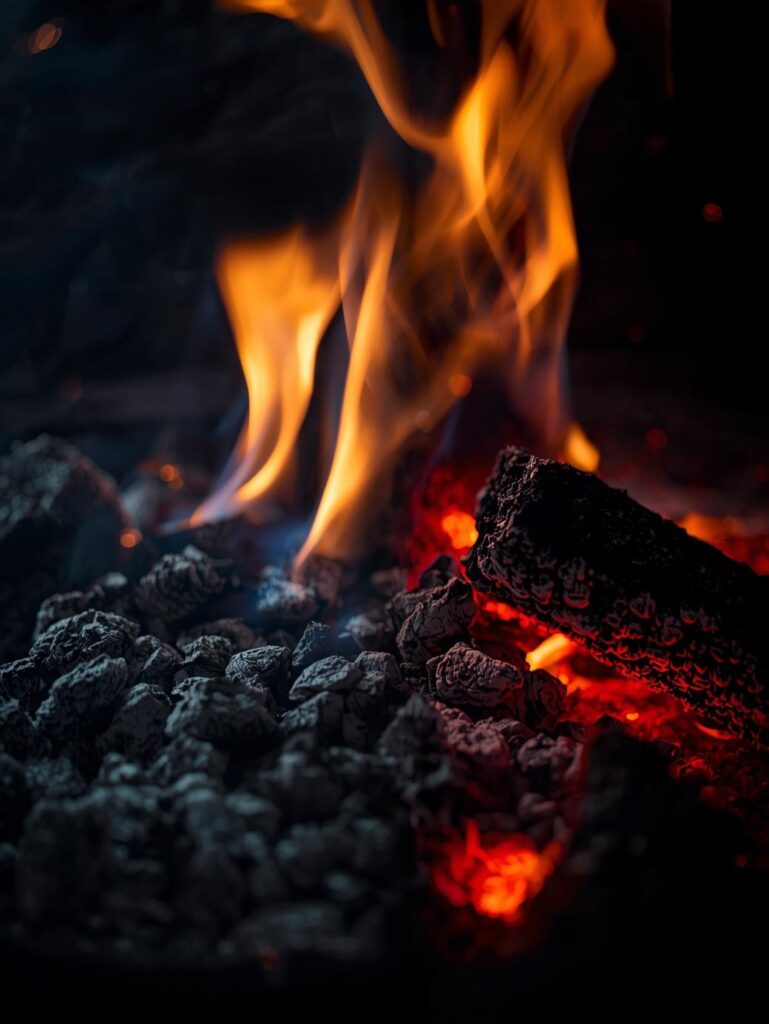Fire Master’s Note: Temperature control is the final frontier of BBQ mastery. It’s the invisible skill that separates weekend grillers from true pitmasters. Anyone can light a fire, but controlling it with precision—making it bend to your will for 2 hours or 20—is where the magic happens. This guide won’t just tell you what temperature to use; it will teach you how to think like a thermostat.
Temperature Control Mastery: The Invisible Skill of Great BBQ
“Mastering temperature isn’t about hitting a number; it’s about conducting an orchestra of heat, air, and fuel. The fire is a living thing—it breathes, it grows, it fades. Your job isn’t to fight it, but to understand its language. When you learn to speak ‘fire,’ you gain the power to render tough cuts succulent, to create a perfect crust without a raw interior, and to turn a simple cook into a symphony of flavor and texture.”
Temperature Control Mastery: The Invisible Skill of Great BBQ
Download Your Free Temperature Control Field Guide
Welcome to the core of consistent BBQ results. Whether you’re searing a steak or smoking a brisket, the difference between good and great almost always comes down to heat management. This guide will demystify the principles of temperature control across all grill types, giving you the knowledge to command your fire with confidence.
🎯 THE TEMPERATURE MINDSET: YOU ARE THE THERMOSTAT
Stop reacting to temperature swings and start anticipating them.
⚙️ The Three Laws of Heat Management
The Foundation of Fire Control
- Law 1: Heat Follows Airflow: Fire is a chemical reaction that requires oxygen. More air = hotter, faster burn. Less air = cooler, slower burn. The vents are your primary control.
- Law 2: Stability is a Delayed Reaction: When you adjust a vent or burner, it takes 5-15 minutes for the temperature to fully reflect the change. Small, patient adjustments win the race.
- Law 3: The Fire is a Pendulum, Not a Switch: You are not turning heat on and off; you are guiding a swinging pendulum. Your goal is to dampen the swings, creating a stable, predictable environment.
🎯 The Reactor vs. The Controller
🔥 The Reactor
- Chases temperature swings
- Makes large, frequent adjustments
- Lid is constantly open
- Fights flare-ups with water
- Results: Inconsistent, often burnt or undercooked
- Mindset: “Why won’t this thing stay at 225°F?!”
🎛️ The Controller
- Anticipates temperature trends
- Makes small, infrequent adjustments
- Keeps lid closed; “If you’re lookin’, you ain’t cookin'”
- Manages flare-ups with zone management
- Results: Predictable, perfect doneness every time
- Mindset: “The fire is currently trending down; I’ll open the vent 10%.”
🔥 MASTERING YOUR GRILL TYPE
Each grill has its own personality. Learn to speak its language.
🎪 The Grill Control Matrix
How to Command Your Fire
- Gas Grill (The Easy Thermostat):
- Control Method: Burner knobs. For precise control, use multiple burners at different settings to create zones.
- Pro Technique (Indirect Heat): Light the burners on one side only. The hot side is for searing, the off side is for gentle cooking. This is your most powerful tool. Master it in our Two-Zone Grilling Mastery guide.
- Common Mistake: Putting all burners on high and burning the outside of food before the inside cooks.
- Charcoal Grill (The Purist’s Instrument):
- Control Method: Top and bottom vents. Bottom Vent: Primary control for oxygen inflow. Top Vent: Fine-tuning for heat and smoke flow. Always keep the top vent at least partially open to avoid stale, bitter smoke.
- Pro Technique (The Minion Method): For long cooks, fill the charcoal chamber with unlit briquettes and place a small number of lit coals on top. This provides a long, steady burn that gradually spreads.
- Common Mistake: Making huge vent adjustments and then opening the lid every 5 minutes to check, causing massive temperature swings.
- Pellet Grill (The Digital Oven):
- Control Method: Digital controller. Set it and mostly forget it.
- Pro Technique (Smoke Boost): Many pellet grills have a “Smoke” or “Super Smoke” setting that runs at a lower temperature (160-180°F) for enhanced smoke flavor at the start of a cook.
- Common Mistake: Expecting heavy smoke flavor like an offset stick burner. Pellet grills provide lighter, cleaner smoke.
📊 The Temperature Control Playbook
🎯 Your Guide to Every Cooking Scenario
| Cooking Style | Target Temp Range | Goal & Method | Best Grill Type |
|---|---|---|---|
| Hot & Fast Searing | 450-600°F (230-315°C) | Create a flavorful crust quickly. Use direct, high heat. Lid open or closed for a convection effect. | Charcoal, Gas |
| All-Purpose Grilling | 350-450°F (175-230°C) | Cook through thicker cuts like chicken breasts, pork chops, and burgers. Use two-zone fire. | Gas, Charcoal |
| Low & Slow Smoking | 225-275°F (107-135°C) | Render fat and tenderize tough cuts. Use indirect heat with wood smoke. Lid closed. | Pellet, Charcoal, Offset |
| Poultry & Roasts | 325-375°F (163-190°C) | Crisp skin on poultry while cooking through. Higher heat than true BBQ. | Gas, Charcoal (indirect) |
| Ultra-Low Smoking | 150-200°F (65-93°C) | Cold smoking cheese, nuts, or salt. No cooking, just smoke infusion. Special setup required. | Pellet (with tube), Dedicated Cold Smoker |
🎛️ THE ART OF THE VENT: CHARCOAL MASTERY
This is where temperature control becomes an art form.
🔄 The Vent Adjustment Protocol
How to Make Changes Without Chaos
- Read the Trend: Is the temperature climbing steadily, falling, or holding? Don’t just look at the current number; see where it’s going.
- Make a Small Adjustment: Move the bottom vent no more than ¼-inch at a time. This is a fine-tuning knob, not a throttle.
- WAIT 15 Minutes: This is the hardest part. Close the lid and walk away. Let the fire absorb the change and settle.
- Reassess: Check the temperature trend again. Is it responding as expected? If not, make another tiny adjustment.
- Use the Top Vent for Fine-Tuning: Once you’re within 25°F of your target, use the top vent for the final tweaks. Closing it slightly will trap more heat.
📈 Reading the Fire’s Clues
What Your Grill is Telling You
- Thick White Smoke: Fire is starved for oxygen or wood is too wet. Result: Bitter, acrid flavor. Fix: Open vents to increase airflow.
- Thin Blue Smoke: Clean, efficient burn. Result: Sweet, clean smoke flavor. This is your goal.
- Temperature Dropping Consistently: Running out of fuel. Fix: Add pre-lit charcoal (from a chimney starter) to maintain heat without a large swing.
- Wild Temperature Swings: Lid opened too frequently or vents adjusted too aggressively. Fix: Be patient. Trust your setup.
🌡️ TOOLS OF THE TRADE: YOUR TEMPERATURE ARSENAL
The right tools remove the guesswork and let you focus on control.
🗣️ The Essential Temperature Toolkit
From Basic to Pro
- Instant-Read Thermometer (Non-Negotiable): For checking internal doneness of meat quickly. This is your truth-teller. See our Best Thermometers Guide.
- Leave-In Probe Thermometer (Game Changer): One probe for the grill temp (ambient), one for the meat temp (internal). Allows you to monitor your cook without opening the lid.
- Grill Surface Thermometer (For Lids Without One): A simple, analog thermometer that sits on the grate. More accurate than built-in lid thermometers.
- Infrared Thermometer (Laser Gun) (Nice to Have): For instantly checking the surface temperature of your grates, perfect for knowing when you’ve reached searing temp.
📋 THE TEMPERATURE MASTERY DRILL
Your Practice Plan for Fire Control
Drill 1: The Empty Grill
Light your grill with no food. Practice holding 225°F, 350°F, and 450°F for 30 minutes each. Learn your vents/knobs without pressure.
Drill 2: The Two-Zone Fire
Set up a two-zone fire. Hold 500°F on the direct side and 300°F on the indirect side simultaneously.
Drill 3: The Recovery Test
With the grill at 350°F, open the lid for 30 seconds (simulating a flip). Time how long it takes to recover. Learn your grill’s personality.
Drill 4: The Long Hold
On a charcoal grill, hold 250°F for 4 hours. Practice adding fuel and managing vents. This is the ultimate test.
🚨 TEMPERATURE TROUBLESHOOTING: FIREFIGHTING 101
🎯 Diagnosing and Fixing Common Problems
| Problem | Diagnosis | The Master’s Fix |
|---|---|---|
| Grill Won’t Get Hot Enough | Insufficient fuel, clogged vents, or not enough airflow. | Add more lit fuel. Ensure all vents are fully open. Check for ash blockage in charcoal grills. |
| Grill Runs Too Hot | Too much fuel or excessive airflow. | Close bottom vent incrementally. On gas, turn down burners. Spread out charcoal to reduce intensity. |
| Wild Temperature Swings | Over-correction or frequent lid opening. | Make smaller adjustments. Wait longer between checks. Trust the process. |
| Hot/Cold Spots | Normal for all grills, but can be managed. | Map your grill’s zones with the bread test. Use this knowledge for zone cooking. |
🏁 YOU ARE NOW THE MASTER OF YOUR FIRE
You have graduated from simply cooking over a fire to commanding it. You now understand that temperature control is a dance of anticipation, patience, and subtle guidance. The numbers on the thermometer are no longer a source of stress but a feedback loop for your expertise.
Remember the three laws: Heat follows air, stability is delayed, and fire is a pendulum. With this knowledge, you can tackle any recipe, on any grill, with unwavering confidence.
The single most important technique for precise temperature control on any grill
Your Temperature Control Library: Deepen your command of the flame.

